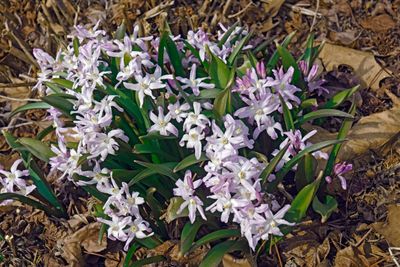How Many Different Amsonias are There?
Amsonia is actually the name of a genus of plants that contains 22 species. These plants are, for the most part, semi-woody perennials with a clumping growth habit and small, star-shaped flowers. Often, when gardeners refer to amsonias, they are talking about Amsonia tabernaemontana, commonly known as common bluestar, eastern bluestar, or willowleaf bluestar. This is by far the most commonly grown species. There are, however, many other types of amsonia that deserve recognition.
Varieties of Amsonia
Shining bluestar (Amsonia illustris) – Native to the southeastern U.S., this plant is very similar in appearance to the blue star species. In fact, some plants that are sold as A. tabernaemontana are actually A. illustris. This plant stands out with its very shiny leaves (hence the name) and hairy calyx. Threadleaf bluestar (Amsonia hubrichtii) – Native only to the mountains of Arkansas and Oklahoma, this plant has a very distinctive and fascinating appearance. It has an abundance of long, thread-like leaves that turn a stunning yellow color in autumn. It is very tolerant of hot and cold, as well as a variety of soil types. Peebles’ bluestar (Amsonia peeblesii) – Native to Arizona, this rare amsonia variety is extremely drought tolerant. European bluestar (Amsonia orientalis) – Native to Greece and Turkey, this short variety with round leaves is more familiar to European gardeners. Blue Ice (Amsonia “Blue Ice”) – A short little plant with unclear origins, this hybrid of A. tabernaemontana and its undetermined other parent is probably native to North America and has stunning blue to purple flowers. Louisiana bluestar (Amsonia ludoviciana) – Native to the southeastern U.S., this plant stands out with its leaves that have fuzzy, white undersides. Fringed bluestar (Amsonia ciliata) – Native to the southeastern U.S., this amsonia can only grow in very well-drained, sandy soil. It is known for its long, thread-like leaves covered in trailing hairs.
